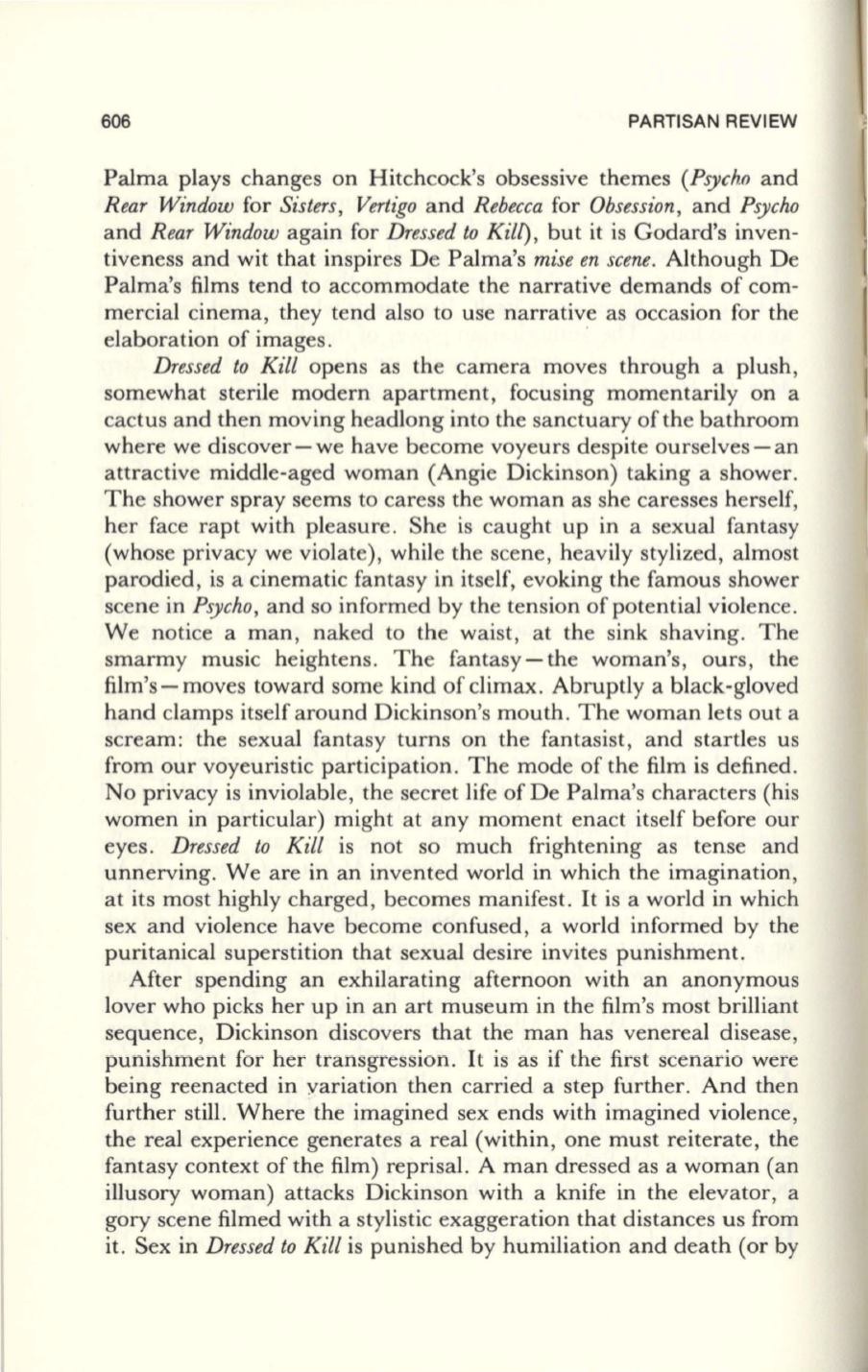
606
PARTISAN REVIEW
Palma plays changes on Hitchcock's obsessive themes
(Psycho
and
Rear Window
for
Sisters, Vertigo
and
Rebecca
for
Obsession,
and
Psycho
and
Rear Window
again for
Dressed to Kill),
but it is Godard's inven–
tiveness and wit that inspires De Palma's
mise en scene.
Although De
Palma's films tend to accommodate the narrative demands of com–
mercial cinema, they tend also to use narrative as occasion for the
elaboration of images.
.
Dressed to Kill
opens as the camera moves through a plush,
somewhat sterile modern apartment, focusing momentarily on a
cactus and then moving headlong into the sanctuary of the bathroom
where we discover-we have become voyeurs despite ourselves-an
attractive middle-aged woman (Angie Dickinson) taking a shower.
The shower spray seems to caress the woman as she caresses herself,
her face rapt with pleasure. She is caught up in a sexual fantasy
(whose privacy we violate), while the scene, heavily stylized, almost
parodied, is a cinematic fantasy in itself, evoking the famous shower
scene in
Psycho,
and so informed by the tension of potential violence.
We notice a man, naked to the waist, at the sink shaving. The
smarmy music heightens . The fantasy-the woman's, ours, the
film's - moves toward some kind of climax. Abruptly a black-gloved
hand clamps itself around Dickinson's mouth. The woman lets out a
scream: the sexual fantasy turns on the fantasist, and startles us
from our voyeuristic participation. The mode of the film is defined .
No privacy is inviolable, the secret life of De Palma's characters (his
women in particular) might at any moment enact itself before our
eyes.
Dressed to Kill
is not so much frightening as tense and
unnerving. We are in an invented world in which the imagination,
at its most highly charged , becomes manifest. It is a world in which
sex and violence have become confused, a world informed by the
puritanical superstition that sexual desire invites punishment.
After spending an exhilarating afternoon with an anonymous
lover who picks her up in an art museum in the film's most brilliant
sequence, Dickinson discovers that the man has venereal disease,
punishment for her transgression.
It
is as if the first scenario were
being reenacted in variation then carried a step further. And then
further still. Where the imagined sex ends with imagined violence,
the real experience generates a real (within, one must reiterate, the
fantasy context of the film) reprisal. A man dressed as a woman (an
illusory woman) attacks Dickinson with a knife in the elevator, a
gory scene filmed with a stylistic exaggeration that distances us from
it. Sex in
Dressed to Kill
is punished by humiliation and death (or by


